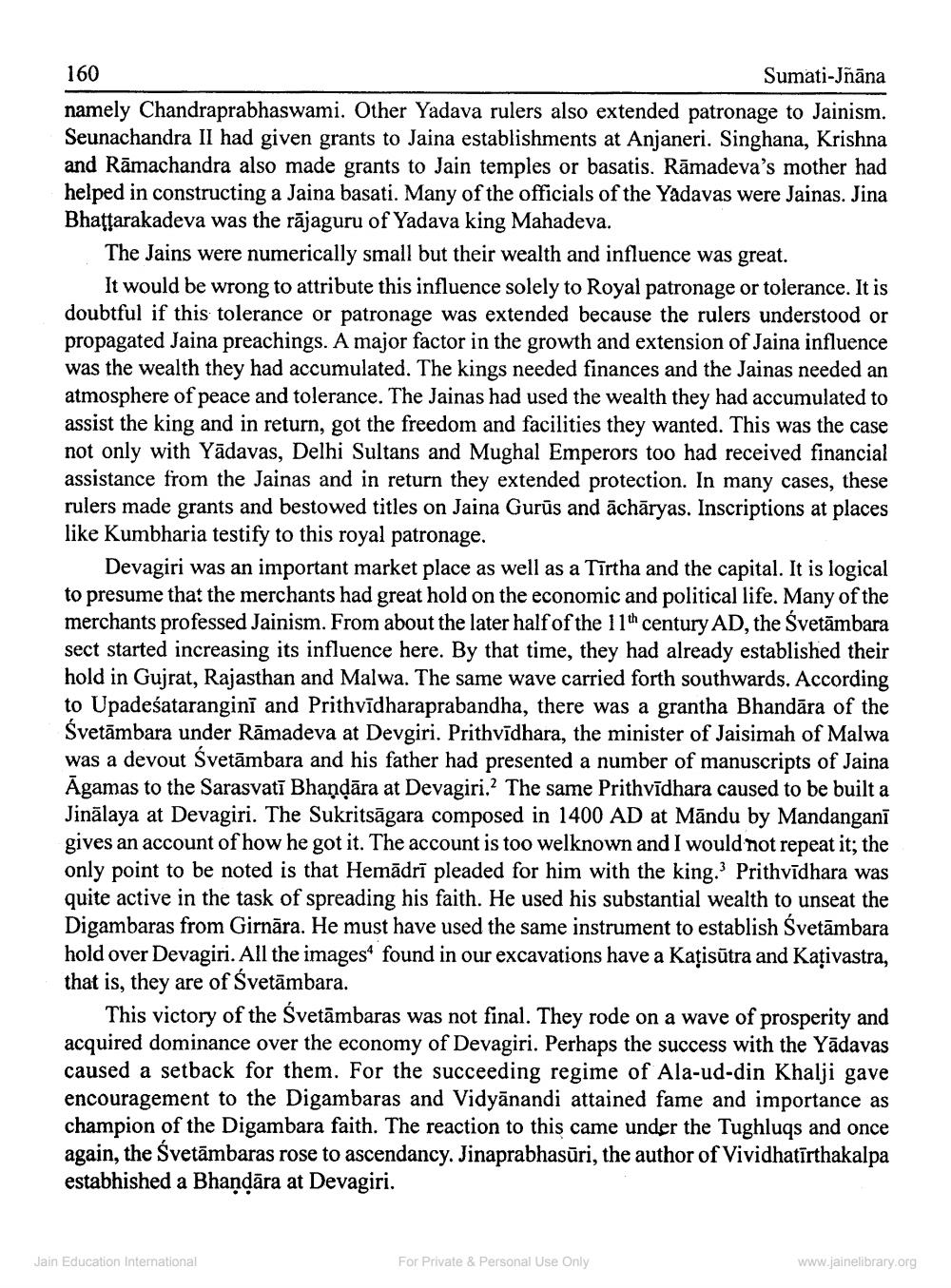________________
160
Sumati-Jñāna namely Chandraprabhaswami. Other Yadava rulers also extended patronage to Jainism. Seunachandra II had given grants to Jaina establishments at Anjaneri. Singhana, Krishna and Rāmachandra also made grants to Jain temples or basatis. Rāmadeva's mother had helped in constructing a Jaina basati. Many of the officials of the Yadavas were Jainas. Jina Bhattarakadeva was the rājaguru of Yadava king Mahadeva.
The Jains were numerically small but their wealth and influence was great.
It would be wrong to attribute this influence solely to Royal patronage or tolerance. It is doubtful if this tolerance or patronage was extended because the rulers understood or propagated Jaina preachings. A major factor in the growth and extension of Jaina influence was the wealth they had accumulated. The kings needed finances and the Jainas needed an atmosphere of peace and tolerance. The Jainas had used the wealth they had accumulated to assist the king and in return, got the freedom and facilities they wanted. This was the case not only with Yādavas, Delhi Sultans and Mughal Emperors too had received financial assistance from the Jainas and in return they extended protection. In many cases, these rulers made grants and bestowed titles on Jaina Gurūs and achāryas. Inscriptions at places like Kumbharia testify to this royal patronage.
Devagiri was an important market place as well as a Tīrtha and the capital. It is logical to presume that the merchants had great hold on the economic and political life. Many of the merchants professed Jainism. From about the later half of the 11th century AD, the Svetāmbara sect started increasing its influence here. By that time, they had already established their hold in Gujrat, Rajasthan and Malwa. The same wave carried forth southwards. According to Upadeśatarangini and Prithvīdharaprabandha, there was a grantha Bhandāra of the Svetāmbara under Rāmadeva at Devgiri. Prithvīdhara, the minister of Jaisimah of Malwa was a devout Svetāmbara and his father had presented a number of manuscripts of Jaina Agamas to the Sarasvati Bhandāra at Devagiri. The same Prithvīdhara caused to be built a Jinālaya at Devagiri. The Sukritsāgara composed in 1400 AD at Māndu by Mandangani gives an account of how he got it. The account is too welknown and I would not repeat it; the only point to be noted is that Hemādrī pleaded for him with the king. Prithvīdhara was quite active in the task of spreading his faith. He used his substantial wealth to unseat the Digambaras from Girnāra. He must have used the same instrument to establish Svetāmbara hold over Devagiri. All the images found in our excavations have a Kațisūtra and Kațivastra, that is, they are of Śvetāmbara.
This victory of the Svetāmbaras was not final. They rode on a wave of prosperity and acquired dominance over the economy of Devagiri. Perhaps the success with the Yādavas caused a setback for them. For the succeeding regime of Ala-ud-din Khalji gave encouragement to the Digambaras and Vidyānandi attained fame and importance as champion of the Digambara faith. The reaction to this came under the Tughluqs and once again, the Svetāmbaras rose to ascendancy. Jinaprabhasūri, the author of Vividhatīrthakalpa estabhished a Bhandāra at Devagiri.
Jain Education International
For Private & Personal Use Only
www.jainelibrary.org




